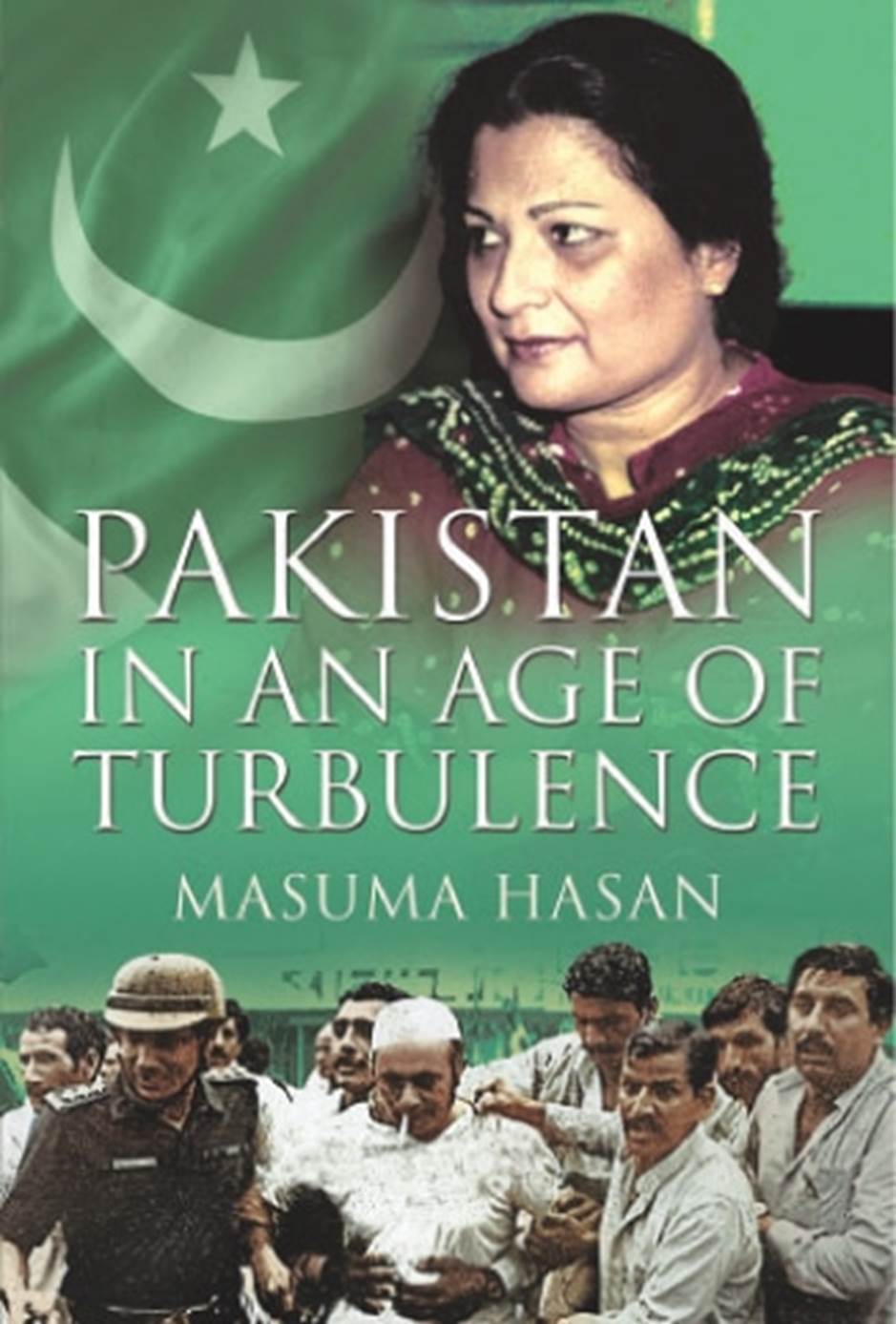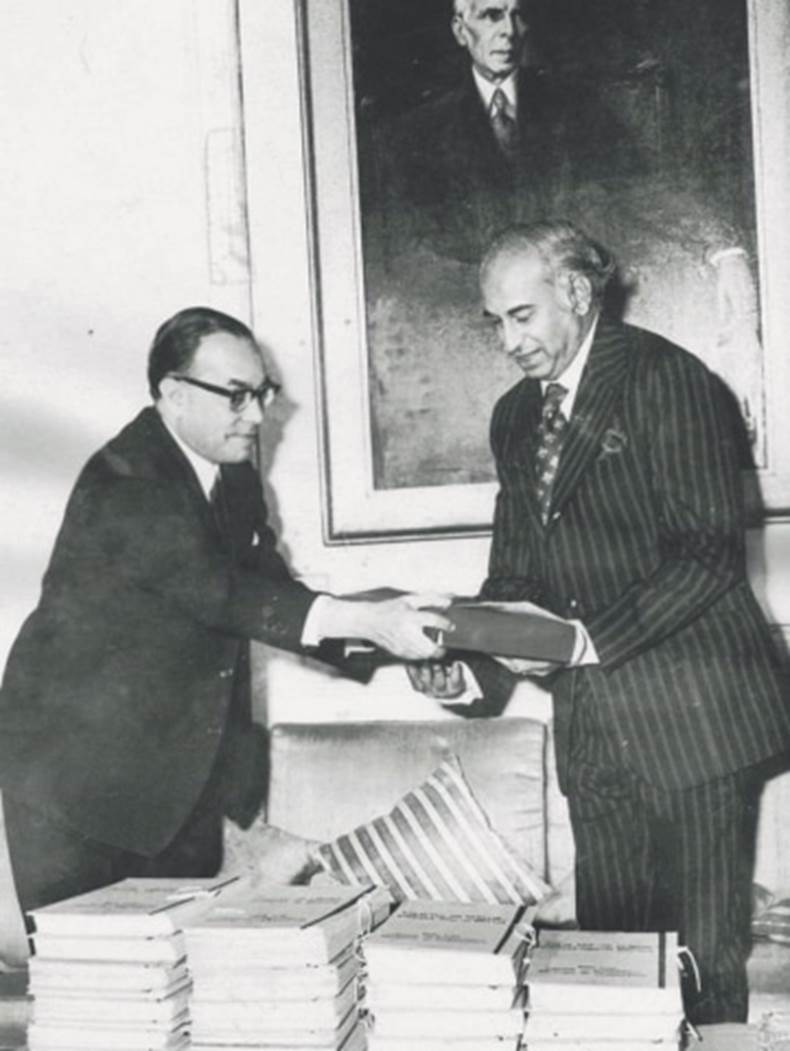
Non-Fiction: Ringside to a Rollercoaster
By Karamatullah K. Ghori
Canada

Pakistan in an Age of Turbulence
By Dr Masuma Hasan
Pen and Sword History, UK
ISBN: 978-1526788603
272pp
An author’s abiding concern is what impact their labor would have on readers. Impact is associated with time. Time, as they say, is of the essence for the acceptability of a book. If it lands in readers’ hands at a moment relatable to prevailing times, then it stirs a chord, exerting seminal influence.
Allama Muhammad Iqbal’s Shikwa [Lamentation/Complaint] and, earlier, Maulana Altaf Hussain Hali’s Musaddas [Sixain] — popularly known as Mudd-o-Jazzar-i-Islam [Ebb and Tide of Islam] — had such a seminal impact on the Muslims of the Subcontinent. As eight centuries of Muslim rule were eclipsed by the rise of an alien Raj, people could distinctly relate to Hali’s agonized dismay at the precipitate decline and decay of his fellow Muslims.
What a coincidence that Pakistan in an Age of Turbulence — Dr Masuma Hasan’s memoirs of life set against Pakistan’s cyclical encounter with turmoil — comes out at a time when Pakistanis are up against the most divisive turbulence in their national existence since 1971, when the country was split into half and Bangladesh was born as a separate entity.
She may not have planned it, but circumstances and Pakistan’s perennial flirtation with turbulence seems to be designer-made for her book’s unveiling.
And what another interesting coincidence that the author — whom I’ve known since we were both students at the University of Karachi in the early 1960s — traces her roots to Hali’s city of Panipat, where her illustrious forebears settled in the 13th century during the reign of the Delhi Sultanate.
Hasan writes that her great progenitor Malik Ali — who traced his family tree to Imam Ali Naqi, the 10th imam from the family of our Holy Prophet (PBUH) — had migrated to the Subcontinent during Ghayasuddin Balban’s reign and was granted a fief in Panipat.
Panipat had been the locus of more epochal wars for political domination than any other part of the Subcontinent, witnessing one upheaval after another in the land’s history as well as folklore. Dealing with crises, thus, is in Hasan’s DNA. But she should be grateful that the tradition of overcoming the daunting challenge of a crisis, initially set by her ancestor Malik Ali, has served her family of Panipat’s Khwajas [masters] so well.
A scholar in her own right, Hasan’s glittering career should be the envy of any man or woman — particularly the latter — aspiring to have their name written in gold. Armed with a doctorate in economics and politics from the prestigious University of Cambridge, she served as head of the National Institute of Public Administration (NIPA).
As Pakistan’s ambassador to Austria, she charmed many a United Nations agency with the dint of her suave persona and impressive scholarship. Gen Pervez Musharraf, to date the last of the Pakistani Bonapartes, elevated Hasan to the rank of cabinet secretary, much to the consternation and protest of puffed-up bureaucrats.
In all these high-profile jobs, Hasan left an impact that far survived her tenure in each assignment. As cabinet secretary, she played a great role in persuading Gen Musharraf to make public the famous Hamoodur Rahman Report — that had been gathering dust in the dark dungeons of official archives — on the debacle in former East Pakistan.
In the context of that historic document, Hasan seems to agree with those who would give a pass to former prime minister Zulfikar Ali Bhutto that he didn’t doctor the Commission’s full report, although it was put under wraps during his watch.
But those who knew Bhutto’s endemic megalomania and unbridled lust for absolute power — which ultimately brought him to a tragic end — would find it hard to accept that he didn’t tinker with the report’s findings. It’s difficult to believe, as per the surviving version of the report, that Gen Yahya Khan alone was the principal architect and villain of the episode that broke Pakistan into two.
But despite her rollercoaster ride as a public servant, Hasan’s defining and lasting portrayal is that of a great survivor, along with the Pakistan Institute of International Affairs (PIIA). Her illustrious father, Khwaja Sarwar Hasan, had founded PIIA in 1948. Khwaja Sahib was a towering personality and a great scholar in the tradition of luminaries, such as Hali, that the fertile soil of Panipat has produced.
PIIA was Khwaja Sahib’s baby, the apple of his eye. Hasan writes that he had nurtured this labor of love with great devotion. But it came under fire from Bhutto’s unchecked lust to amass as much power as possible.

Justice Hamoodur Rahman presents his report to Zulfikar Ali Bhutto | Archives
Bhutto destroyed the pillars of Pakistan’s then vibrant economy under the shoddy slogan of socialism. So insatiable was his thirst for aggrandizement of power that he wouldn’t spare even a nursery of learning and scholarship such as PIIA. Bhutto’s marauding broke Khwaja Sahib’s heart. Bhutto was a man he admired, but it was in Bhutto’s nature to decimate all genuine well-wishers and promote sycophant cronies. Khwaja Sahib died a broken man.
But the heist of her father’s shining legacy became a challenge for the indomitable and intrepid daughter of Panipat. PIIA was Pakistan’s first, trailblazing think tank, respected for its sterling scholarship and research far beyond the shores of Pakistan. Hasan made it her life’s mission to wrest her father’s jewel from the grubby hands of carpetbaggers and soldiers of fortune.
Challenges and obstacles were encountered aplenty as Hasan strode on, parrying the jabs and thrusts not only of power-drunk rulers, but also of lascivious property developers who salivated at the market potential of PIIA’s iconic, triangular building right opposite the Sindh Governor House.
The book discloses that, when Gen Ziaul Haq issued an ordinance to bring PIIA under government control, Hasan went from pillar to post to have the dictator’s unilateral action annulled. When Benazir Bhutto came to power, she made Hasan an ambassador, but was too meek, or uncaring, to lift the oppression of Gen Zia’s high-handedness. Finally, Justice Dorab Patel — who had broken rank with his fellow justices on the judicial murder of Zulfikar Ali Bhutto — came to Hasan’s rescue and ended her nightmare.
In all her battles, Hasan writes that she had the unflagging support of the love of her life, her husband Fatehyab Ali Khan. He was an equal partner and she admits, quite frankly, that she saw Pakistani politics through Khan’s eyes.
She points out that Khan was a towering personality in the student politics of the 1950s and ’60s. A left-leaning socialist, he suffered at the hands of dictators such as Gens Ayub Khan and Zia, but never wavered in his commitment to his political ideas and ideals.
Khan was a prominent component in the famous Movement for the Restoration of Democracy against Gen Zia’s autocratic rule, but was stung by his fellow-travelers from the traditional font of dynastic politics. His friend Mairaj Mohammad Khan, another leading star of student politics, was also a victim of political chameleons such as Bhutto who changed colors, subverting the faithful and promoting self-serving sycophants.
The book has many other juicy political vignettes, such as former prime minister Shaukat Aziz confiding in Hasan that former American president Bill Clinton’s brief visit to Islamabad in 2000 was geared towards ensuring that Mian Nawaz Sharif’s life would be spared. Perhaps this was a return of favor, for Sharif’s role in the Kargil episode.
Pakistan in an Age of Turbulence is history from the perspective of a woman who experienced so much of it. The book is an important chronology of how Pakistan came to be where it is.
(The reviewer is a former ambassador and an author, poet, commentator on current affairs and motivational speaker. Dawn)

